- Home
- slideshows
- miscellaneous
- Sir Richard Branson just strapped a giant rocket to a 747 jet airplane with his space company Virgin Orbit
Sir Richard Branson just strapped a giant rocket to a 747 jet airplane with his space company Virgin Orbit
Sending a rocket into space is astronomically expensive. Even the most affordable launch vehicles today, such as the Falcon 9 rocket built by Elon Musk's company SpaceX, can cost more than $62 million per flight.

But the demand to launch smaller, less expensive satellites more frequently is booming, thanks to advances in materials, sensors, and software.
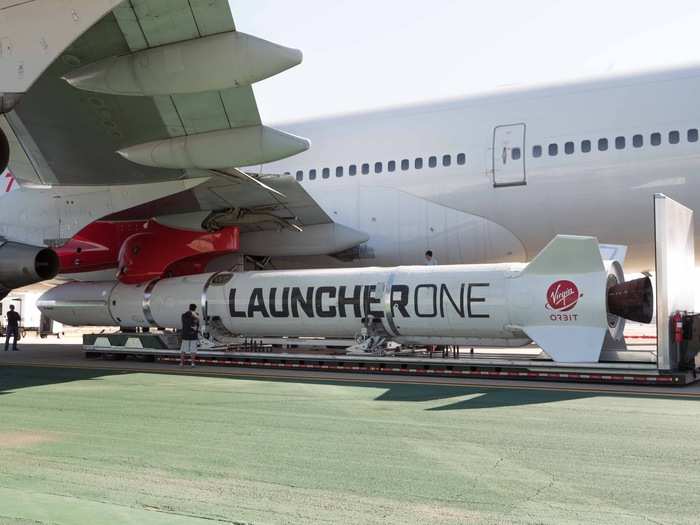
Source: Allied Market Research
Branson hopes to help meet that demand by exclusively launching smaller payloads more often and more affordably with Virgin Orbit.
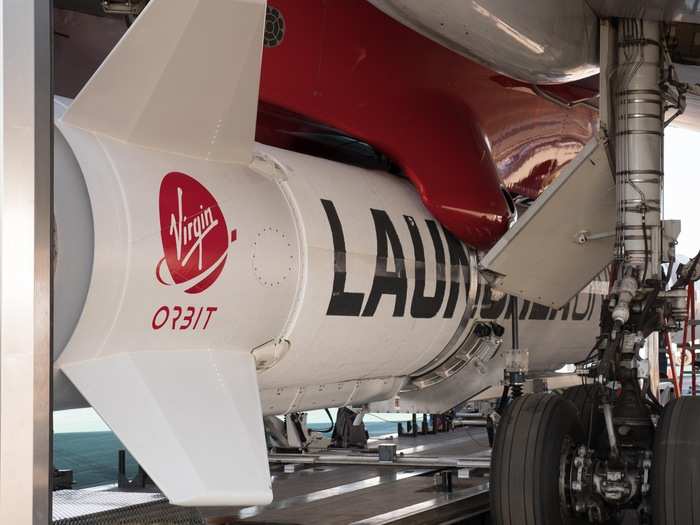
Giving companies this option for small launches would allow them to avoid having to piggyback with a larger spacecraft into orbit around Earth. That approach — called a ride-share — can make getting into space cheaper, but it comes with headaches.
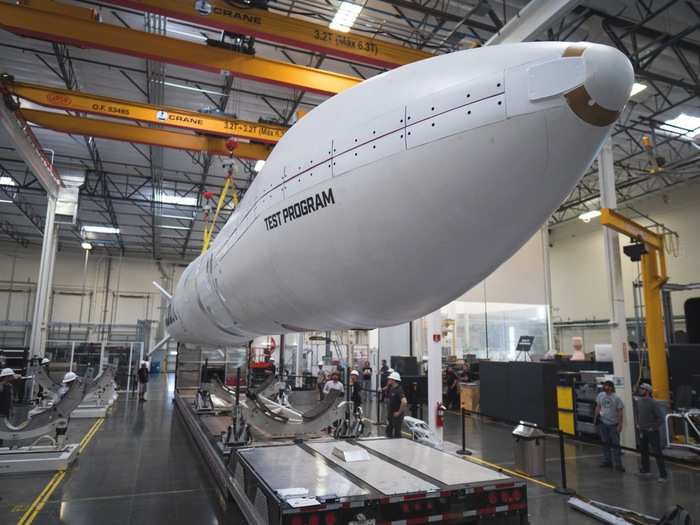
The small ride-sharing payloads are tied to bigger, primary payloads, which are controlled by the main spacecraft's owners. Any delay with the larger spacecraft can push back the launch by months or sometimes years.
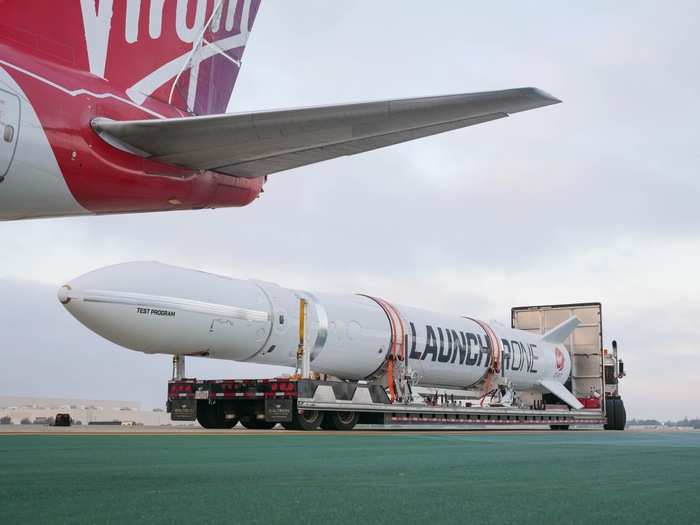
Dealing with weather and commercial flight traffic is also an issue.
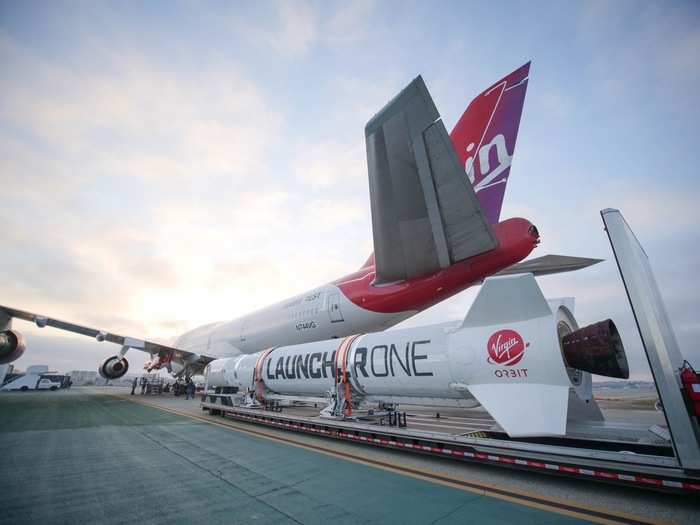
Virgin Orbit's air-launch concept isn't new. It's used today by a company called Orbital ATK, and NASA and the US military has also used it over the decades.
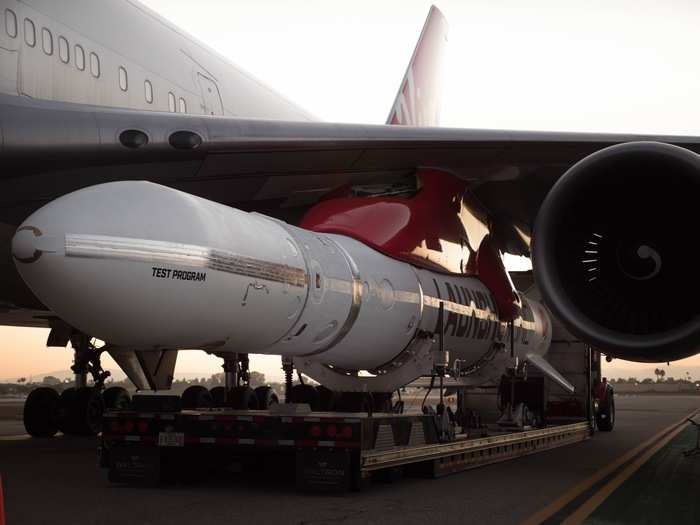
But lighter materials, better avionics, more powerful jet and rocket engines, and other advances have made it an increasingly attractive option. Rockets can be launched more efficiently from the stratosphere, which lowers the cost of sending stuff to orbit.
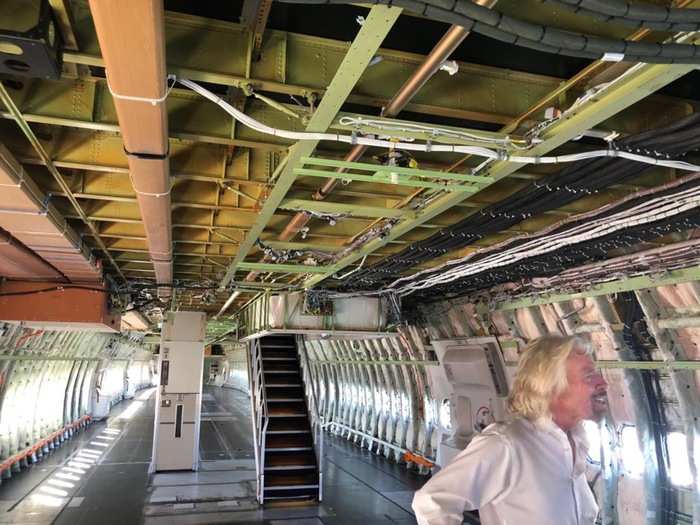
So Virgin Orbit has been busy designing, building, and testing LauncherOne's and Cosmic Girl's systems near Long Beach, California, and at the Mojave Air and Space Port.

One of the first rockets is now finished and preparing for integrated test flights. LauncherOne is 70 feet long and weighs 57,000 lbs, or about the size of 25 passenger cars.
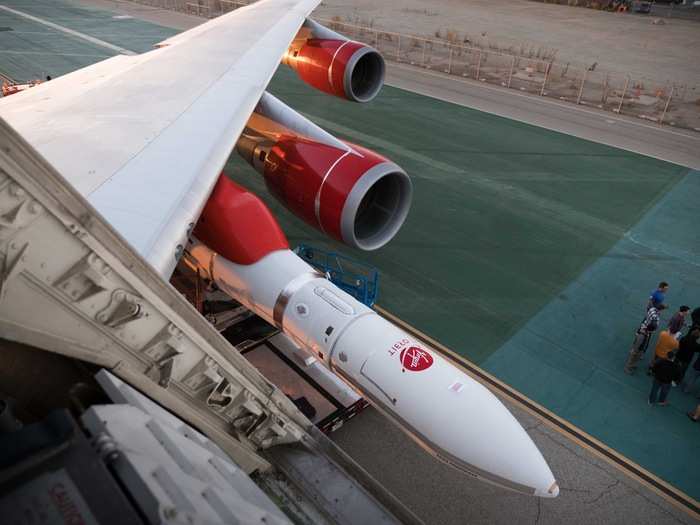
Source: Virgin Orbit
The rocket will send up bread-loaf-size to refrigerator-size satellites, which "will deliver everything from internet, in even the most remote regions, to advanced weather-tracking systems to help in the battle against climate change," the company said.
Source: Virgin Orbit
The company mated (or attached) LauncherOne to a pylon under Cosmic Girl's wing on October 25 at its base in Long Beach in less than 24 hours. Preparing a rocket for liftoff on a launch pad, including attaching a payload, normally take days to weeks.
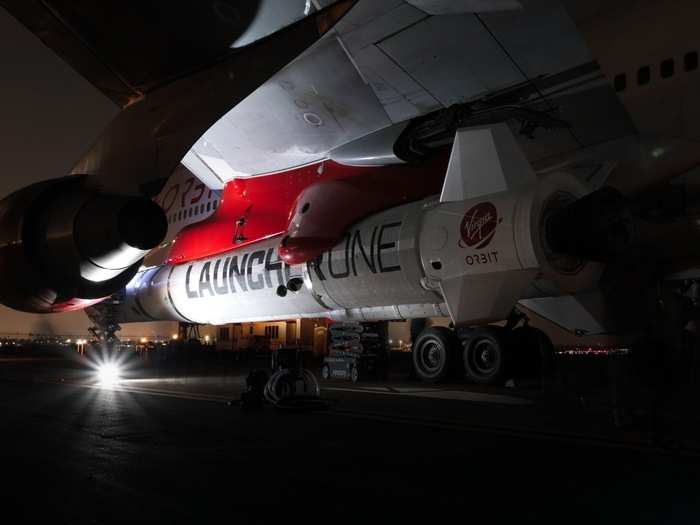
"The fact that we shipped a rocket on this route, positioned it under the aircraft, integrated the system, and verified that that it all works together for the first time all within a single day still astounds me," Dan Hart, Virgin Orbit's CEO, said in a press release.
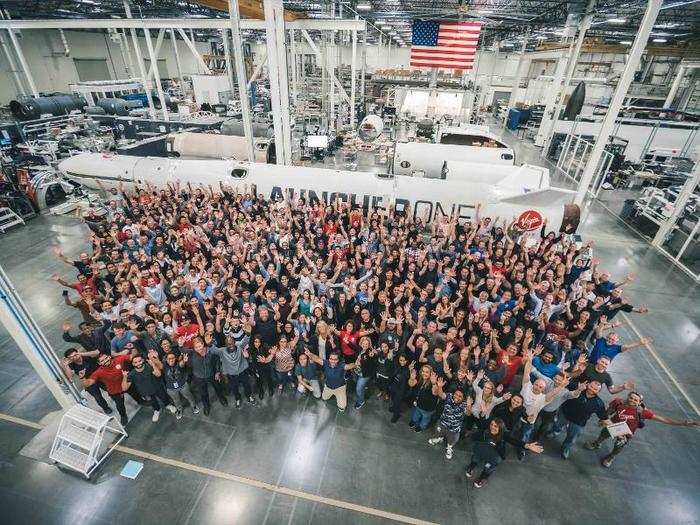
Source: Washington Post
Virgin Orbit's next step is to pull off a series of "captive carry" flights, in which Cosmic Girl takes off and flies around with LauncherOne attached to its wing.
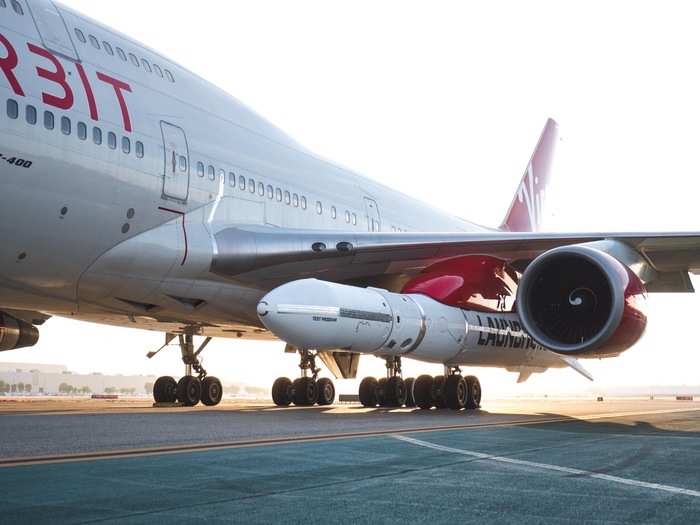
After that, Virgin Orbit will try dropping LauncherOne to see how the release mechanism performs. Then it will be time for a maiden launch into space.
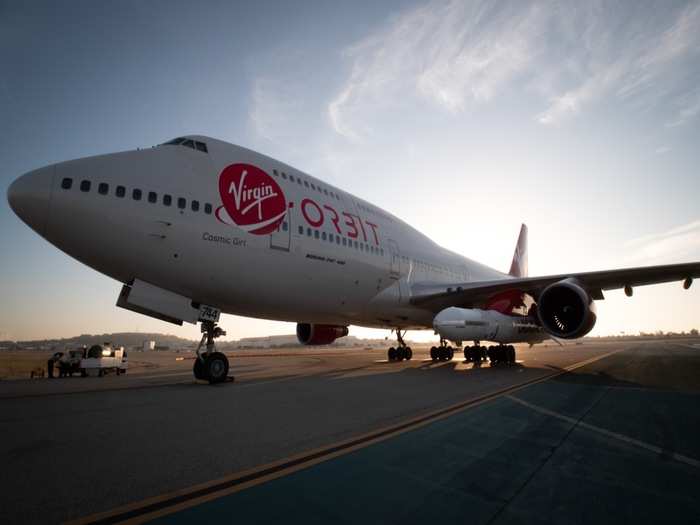
"The company already has hundreds of millions of dollars of launches on contract, for customers ranging from NASA and the US Department of Defense to new start-ups, and everything in between," Virgin Orbit said in a press release.
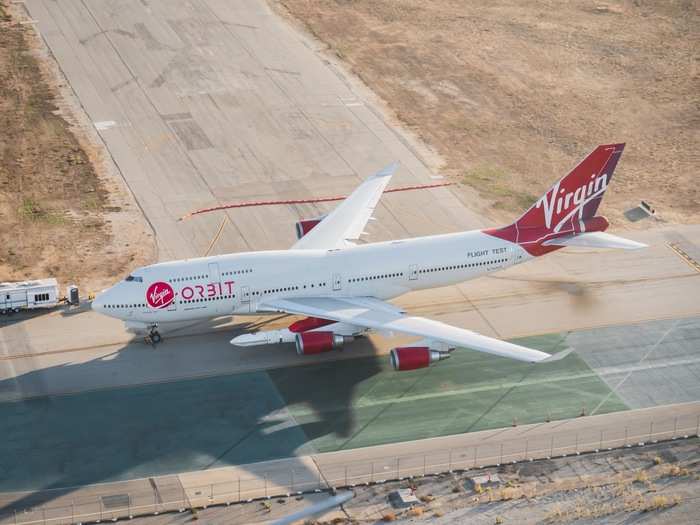
Popular Right Now
Popular Keywords
Advertisement